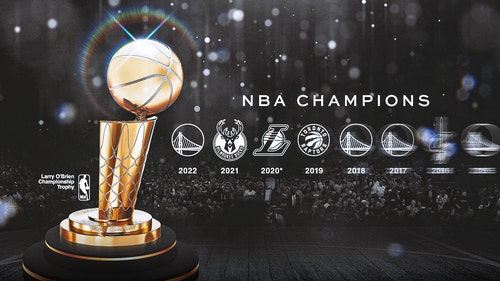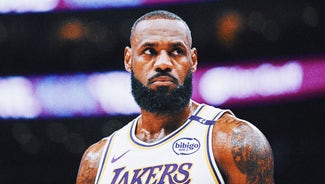
Toronto's window: Can the Raptors' core extend last season's success?

The best season in franchise history is behind the Toronto Raptors—and perhaps beyond them. Little has changed within the roster that won 56 games last season and trudged its way to the Eastern Conference finals. Kyle Lowry and DeMar DeRozan, Toronto’s All-Stars and co-captains, return. So, too, do principals Jonas Valanciunas, Cory Joseph, Patrick Patterson, Norman Powell, and the still-recovering DeMarre Carroll. Some 76.4% of Toronto’s total minutes from last season are accounted for among returning players, per John Schuhmann of NBA.com, putting the Raptors in the top third of the league in terms of year-over-year continuity. From a certain angle, the Raps strike the profile of a winning team in progress, regrouping to push forward.
Context unfortunately suggests otherwise. Improving upon a 56-win season is more difficult than most understand. Even maintaining after one is challenge enough; so much has to go right—in chemistry, in coincidence of contracts, in aging, in health, and in scheduling—to win that many games. Toronto will be pressed to do so based on the state of its roster, even if most of those factors again break in its favor. These Raptors have skill, character, and investment. What they lack is the ability to stretch beyond what they’ve been, given that Toronto head coach Dwane Casey has already culled so much from this particular combination of players.

Many Raptors—Lowry and DeRozan included—have never played better basketball in their careers than they did last season. Should they hold course or even improve marginally, Toronto will still be undercut by the specifics of what changed this summer. Losing Bismack Biyombo, on its face, would not sink a winning team. Yet it does create serious complications for a Raptors squad that was anchored by his defense last season and and the stingy, preventative play of the second unit in general. Toronto’s solid defensive performance was propped up by lineups in which Lowry or DeRozan (or both) played with a cast of reserves. Biyombo was always among them, cleaning up mistakes and finishing possessions with rebounds.
Toronto allowed just 100.6 points per 100 possessions with Biyombo on the floor last season and 104.5 without him. That margin is the difference between a top defense and a mediocre one, and the implications ripple throughout Toronto's entire operation. Lowry has already waxed on the distinction in the way Toronto will have to defend, via Josh Lewenberg of TSN Sports:
"I was [just] talking to one of the coaches and [said]: last year we were able to be 0.8 of a second late or even a second late and [Biyombo] would be that good to clean it up. Now this year we have to be a second early, 8/10th of a second early, to make sure we cover for the shot-blocking that we don’t have. We’ve just got to be on a quicker page. Sometimes you get beat and just say, ‘Biz is there.’ Biz is not there now so we’ve got to be earlier and our reaction time has to be quicker."

Beyond that: Because Biyombo was lurking in help position down the stretch of close games and throughout the postseason, Lowry could afford to dedicate more of his energy to offense. The way that Lowry creates—and drives, in particular—takes a toll. Ditto for DeRozan, who generated so much of his scoring out of hard-earned isolations or by taking contact and hitting the floor to draw fouls. Both high-usage stars were more or less pushed to their limits last season. This year they'll be stretched a little bit further in the absence of Biyombo's rim protection.
This is one area in which Carroll, who logged just 786 minutes last season, should help. Having another plus defender around provides needed relief—albeit in a way that's a bit more specific and contained relative to Biyombo's broad impact. Carroll will likely pick up assignments across three positions next season as particular matchups demand. DeRozan and Powell won't have to defend quite so many of the bigger, stronger forwards that often gave Toronto trouble, which on the whole should require slightly less of the Raptors in the way of help and rotation.

Every little edge helps. The catch with the Raptors is that the current build of the roster doesn't have all that much capacity to reallocate usage or playing time. Valanciunas could stand to see the floor (and the ball) more, but doesn't have the court awareness to work his way through pressure and isn't at all what Toronto needs defensively. Plus, the more that Valanciunas sees the ball, the more that DeRozan is put into awkward, off-ball limbo—stuck spotting up when defenses don't respect his range shooting, and pulled out of what he does best (generate points) in a way that spotlights the limitations of his game. So much in Toronto seems to be balanced in this precarious way. Adjustment to any one element trades off harshly with some other.
Plugging in Jared Sullinger as a starting power forward unfortunately does little to bridge the divide between what the Raptors seem to be and want to be. The bulk of this roster is either in its prime or nearing it. There is little indication that any of Toronto's pipelined prospects (Bruno Caboclo, Lucas Nogueira, Delon Wright) will become a mystery guest in the rotation. Transformation, then, is unlikely; players like Valanciunas, Powell, and Joseph will take steps but none seems set to redefine how the Raptors play. With that understood, Toronto begins its season operating at a relative deficit—chasing not only the title-validated Cavs but their own success of a season ago.
This article originally appeared on









